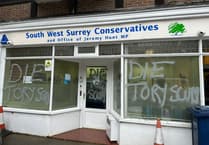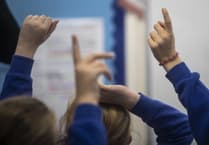VOTERS heading to the polls next week will see the “biggest change to the electoral process in decades”.
For some, this will be their first experience of having to show photographic identification in order to cast their ballot.
But in Woking this practice has been in place for the last two election cycles.
Woking Borough Council was chosen as a guinea pig for a series of trials following a review of electoral fraud by the former Secretary of State for Communities and Local Government, Eric Pickles, in 2016.
Among his recommendations was the piloting of voter ID.
Julie Fisher is Woking Borough Council’s returning officer.
She said the council took part in the Cabinet Office trials to test the feasibility of requesting photo ID at polling stations and found no reason not to embed the process into elections.
Ms Fisher said: “Both pilots delivered high success rates – 99.73 per cent of voters successfully voted after showing the correct form of ID in 2018, and 99.88 per cent in 2019.
“Our experience suggested no reason why bringing ID to vote should not be embedded in our democratic process.
“Like all pilot projects, the main purpose of the voter ID trial was to stress-test the idea for viability and, as was wholly expected, there were some minor administrative issues encountered which were addressed.
“The government provided funds for council officers to create a local public awareness campaign, whilst polling station staff benefited from additional training.
“Thankfully, cases of electoral fraud are rare. As returning officer, one case of electoral fraud is one too many.
“Honest, open and fair elections are fundamental to our democracy and we should do all we can to ensure there is no fraud.”
During the 2018 pilot, the Government said that “the overwhelming majority” of people who came to polling stations were able to cast their vote, 99.8 per cent in the poll card model and 99.6 per cent in the photographic ID model.
“
It is important that we have assurances that voters aren’t being disenfranchised by this significant change.”
Councillor Ruth Ritter
Woking found that the number of people who did not return after being asked to present ID, decreased from 2018. The electoral service teams surmised that this could be due to local electors viewing the requirements as the “new normal”, the Government said.
What it does not show, and nor is it possible to assess, are those who were put off from voting entirely, due to the new rules.
The scheme is being rolled out nationwide for this year’s local elections and next year’s General Election on the back of the pilots.
These, the Government said, “strengthen the integrity of elections in Great Britain and protect voters from electoral fraud” because, “people surveyed were more confident that their election was secure from voter fraud after participating in a poll that required them to show photographic or mixed ID to vote.”
The deadline to apply for voter ID is today, 25 April, at 5pm.
In 2021, across the entire country, there were 79 reported cases of voting fraud, according to the Electoral Commission.
As a comparison there were 166 cases of campaign fraud – where campaigners had not included details about the printer, promoter or publisher on election material, or of someone making false statements about the personal character or conduct of a candidate.
In 2022, a total of 193 cases of alleged electoral fraud were investigated by the police leading to one caution, and court proceedings initiated in one other case.
Of those 193 cases, 123 were for campaign fraud, and 38 for voting.
Opponents to the scheme around Surrey say photo ID just makes it more difficult for people to vote and could disenfranchise the electorate.
Councillor Ruth Ritter said at last month’s Reigate full council meeting: “At a time when voter turnout for local elections in Reigate and Banstead Borough Council was as low as 29 per cent in one ward last year, voters need to be encouraged to partake in democracy.
“Voter ID is the biggest change to the electoral process in decades, and it will affect voters in polling stations at the upcoming elections on May 4.
“It is therefore important that we have assurances that voters aren’t being disenfranchised by this significant change.”
Sampling conducted by the Electoral Commission found one percent of non-voters chose not to cast a ballot “because they didn’t have the right ID” with others – less than one per cent – saying “it was because they disagreed with the requirement” altogether.
Three per cent also said photo ID “made them less likely to vote” with six per cent saying they didn’t know.
Councils will be collecting data from polling stations on the impact of voter ID including how many people are turned away.
This will then be compiled centrally with a report due out in November.




